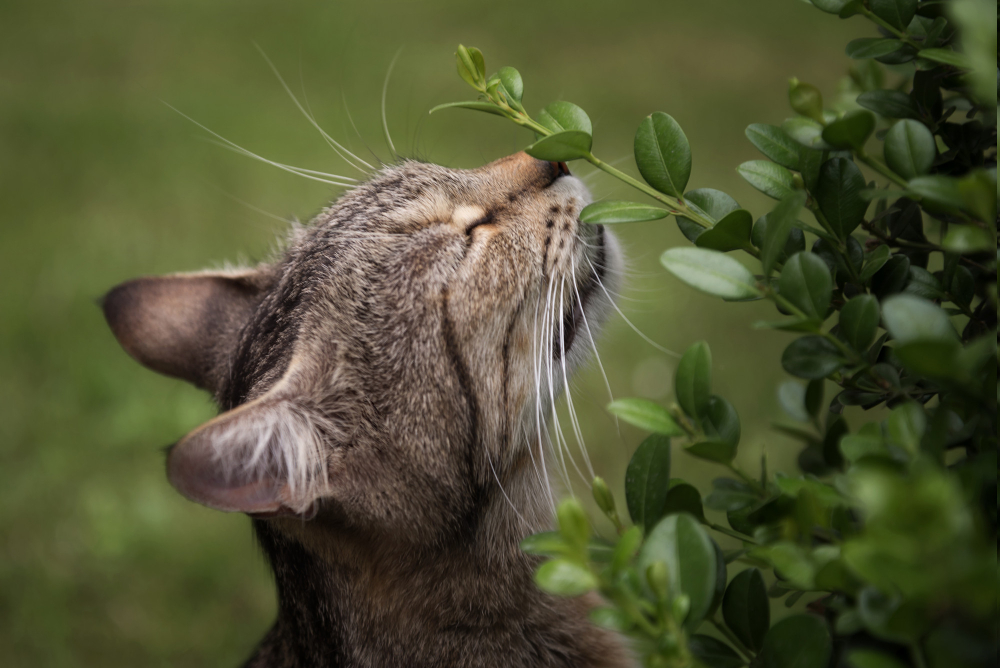September 2021 Edition
What’s New
94% of pet owners say their animal pal makes them smile more than once a day.
Holistic Medicine and Your Pets

Just like people have a choice in healthcare, today’s pet owner has the option to choose holistic veterinary medicine (HVM) instead of, or in conjunction with, conventional veterinary medical care. This article provides an overview of HVM, helping you determine if this type of care is the right choice for you and your pet.
What is Holistic Veterinary Medicine?
By holistic we mean taking into account the whole picture of the patient (your pet) and not simply the symptoms presented at the time of your visit. When your pet is in the care of a holistic vet, the doctor’s aim is to identify and treat the “root cause” of illness, not just alleviate symptoms. They will accomplish this using traditional animal medicine practices plus approaches and treatments from their specialization in holistic animal medicine.
Conventional Veterinarian’s Philosophy of Practice
The conventional veterinarian identifies symptoms of disease and asks, “How do I make these symptoms go away so the pet can be more comfortable?” The doctor dispenses medicines or other treatments to manage the symptoms.
Philosophy of practice: If there are no symptoms, there is no more disease.
Holistic Veterinarian’s Philosophy of Practice
The holistic veterinarian identifies symptoms of disease and asks, “Why is this pet having these symptoms, in this, or these, organ systems, at this time?”
Philosophy of practice: going to the source of the symptoms in order to provide lasting recovery and optimal wellbeing.
Like a medical detective, the holistic vet wants to uncover the root cause of the disease process, not just get rid of symptoms. If the root cause is not addressed, symptoms may return in the same or different organ system.
Education and Training
All veterinarians must have the same foundation of education in order to practice medicine:
- Completion of a four-year college degree (usually in a science such as biology)
- Completion of veterinary medical school
- Passing score on the NAVLE (North American Veterinary Licensing Examination)
- Depending on the state, there may be additional clinical competency tests and/or state jurisprudence exam requirements to be met
- Completion of a state required licensure forms and payment of licensure fees
- Many vets will have a post-doctoral specialization just like a “people doctor”
During the course of their training and practice of animal medicine, a veterinarian may have experienced the benefits of holistic medicine for themselves or become curious about how holistic therapies could benefit animals. Thus begins the additional coursework, practical training, and certification in holistic medicine for pets.
An important distinction: In addition to the above requirements, holistic veterinarians must have successfully completed a certifying exam to refer to themselves as a holistic vet.
Inside a Visit with a Holistic Veterinarian
During your pet’s visit with a holistic veterinarian, the doctor will embark on an inquiry to discover why your pet is ill. They will:
- take a history of the illness, from before symptoms started to the present
- evaluate the disease pattern (how have symptoms changed over time)
- inquire about the animals daily routine, including physical activity
- take fecal samples and blood work for lab tests
- assess the pet’s diet and fluid intake, and elimination behavior
- ask about the pet’s living environment and daily routine
- inquire about the relationship with the pet owner and other animals
Treatment Techniques in Holistic Veterinary Medicine
HVM modalities do vary; some common approaches to treatment may include:
- Acupuncture, Acupressure
- Botanical (herbal) medicines
- Behavioral Interventions
- Environmental Interventions
- Chiropractic Treatment
- Food Intolerance Testing
- Dietary Interventions
- Nutritional Testing and Dietary Supplements
- Homeopathy
- Veterinary Orthopedic Manipulation
- Laser Therapy
When Should I Choose Holistic Vet Care?
Choosing a holistic veterinarian is a personal choice. For some pet owners, HVM is a choice made after conventional treatment has been unsuccessful. For others, holistic veterinary healthcare is the first and only choice for their cat or dog.
The most important step you can take for your beloved pet’s care — conventional or holistic — is to do your homework: research treatments you’re not familiar with, ask questions, and get second opinions when needed. Your pet deserves safe, reliable medical care.
Important: In a medical emergency, go directly to an emergency animal hospital.
The Grain-Free Food Debate: Good, Bad or Indifferent?

The health benefits of different brands of pet foods, particularly grain-free ones, is a big debate in the pet health industry, particularly for dogs. The current consensus seems to be that grain-free foods may do more harm than good for your pet, leading to a dangerous heart condition, which we describe below. Before we get to that, here is some essential information about the pet food industry in general, why people might choose grain-free food, and what constitutes grain-free food.
Why would a pet need grain-free food?
Some people thought if gluten-free and grain-free was better for people, then it would be for their dog, too. Then, in 2007, reports to the FDA indicated a source of gluten used in a kibble produced in China had been contaminated with melamine. This spiraled into keeping dogs off wheat/gluten and other grains. Additionally, American pet owners were (and many still are) choosing to put their pets on a grain-free diet due to concerns that have very little evidence-based science behind them, including the following:
- lack of industry-independent data
- lack of robust scientific studies or nutritional consensus
- inability to afford individualized medical and nutritional assessment
- defaulting to what was taught to them by family or community
If a dog was suspected to have a food allergy or sensitivity, then the dog’s diet was changed to eliminate grains on a trial basis to see if the symptoms improved. If so, grains were suspected as the cause and the dog would remain on grain-free food.
What is grain-free pet food?
Any pet food made without wheat, corn, rice and other grains is considered “grain-free.” This does not make it gluten-free! Gluten-free and grain-free are not synonymous.
To provide the carbohydrates that a pet needs for energy and other physiological functions, a grain-free food contains alternative sources of carbs such as potatoes, oatmeal, and pea flour. This ensures that the grain-free food is equal to, or even greater, in amount of carbs.
Do dogs really need a grain-free diet?
The consensus is that there are only rare medical instances in which a dog will require a costly grain-free diet. Here’s why:
For thousands of years, dogs evolved from their wolf ancestry eating grains as a part of their natural diet. If anything might make a dog unwell, it is more likely to be the preservatives, fillers, and even the source of the protein used in dog food production. Also, over-feeding raw food and human food scraps can expose the pet to hostile bacteria (Campylobacter, Salmonella, and Yersinia) that can make the animal gravely ill.
What health risks accompany feeding grain-free pet food?
Eliminating grains completely from a dog’s diet has led to a significant cardiovascular health problem known as non-hereditary dilated cardiomyopathy (DCM). This heart condition results in an enlarged heart and thinning of the heart muscle. The deterioration of the heart can lead to heart failure and death.
DCM was first identified by reports of adverse events (i.e., dog deaths) submitted to the FDA by vets and dog owners over a period of years. The FDA investigation is still ongoing, but the data has been compelling enough for the agency to issue a warning regarding grain-free food and risk for DCM.
Pet Food Industry Guidelines
Just as we humans have governing bodies overseeing food safety, the same is true for commercial pet food (kibble): WSAVA (World Small Animal Veterinary Association) publishes guidelines for the pet food industry. It’s a big topic that is beyond the scope of our newsletter to discuss in detail, but the bottom line is this: When it comes to choosing pet food, we have to be just as careful for our pets as we are for ourselves. The best, general advice is to
- research the brand
- carefully read ingredient labels
- look for kibbel that has the least additives, fillers, and preservatives and the most naturally sourced, nutrient dense ingredients.
Another great resource for evaluating pet food is this “pet food score card” and the WholeDog Journal resource about pet food ingredients.
If you are feeding grain-free food to your pet, discuss with your vet the reasons why you made this choice and assess the health risks for your pet. If you suspect a food intolerance or potentially life-threatening food allergy but never had your pet tested, veterinarians now have access to reliable food testing methods to confirm that. Ultimately, the choice of the best food for your beloved pet should be made together with a properly trained doctor.
Fido’s Homemade and Healthy Dog Treats with Sweet Potato

When it comes to dog treats, better quality seems to equate with bigger expense. Baking treats for your pet can help reduce expenses and is usually much healthier. Remember, this is a treat, not a daily main course.
These homemade dog treats contain a few essential and vet-approved ingredients: sweet potato, coconut oil/coconut, eggs, coconut flour, and gelatin. You might have to experiment with the ratio to find the consistency and flavor that your pet prefers.
Prep Time: 15 minutes
Cook Time: 20 minutes
Ingredients
- 2 medium sweet potatoes (cooked and cooled)
- 1/2 cup coconut flour
- 1/4 cup gelatin powder (optional)
- 1/2 cup coconut oil (or bacon grease)
- 1 egg
- 1-2 T water
- Preheat oven to 350 degrees.
- Combine all ingredients and mix until well incorporated. If needed, add a little extra coconut flour to get a dough that is slightly thinner than Play Dough.
- Form into 1-inch balls and flatten with your hand.
- We made “paw print” shapes with our fingers to make them cute (totally optional). You can also use a rolling pin to flatten the doggie dough to create a cutout shape with a cookie cutter if you have extra prep time.
- Place on a baking sheet and bake for 20 minutes until lightly browned on the edges.
- Remove from the oven and let cool completely before removing.
Important: These treats do not contain any preservatives. Store in an air-tight container in the fridge for up to 4 weeks, or freeze for several months. (If your dog is teething, or needs to chew for exercise, you can give them a frozen treat to chomp on).
To learn more about these healthy ingredients visit the recipe source listed below
Herbs and Pets: Don’t Put Your Pet’s Health at Risk

When it comes to herbs for pets, just as with people, there is a lot of conflicting and often unreliable information surfing around the Web. Additionally, herbs that may be safe for dogs are often not safe for cats and vice versa. The best advice you can follow when it comes to giving a pet herbs is this: ask a holistic veterinarian.
Unless you’ve received medical guidance from a holistic veterinarian about which herb to give, for what purpose, how much, and how often, do not give it to your pet. You could end up with a tragic pet poisoning.
One thing you can do to keep your dog, cat or other curious pet safe from toxic herbs is to make your home “herb friendly.” The resources listed below provide guidance on pet-safe herbs for the kitchen, home, and outdoor living areas. Additionally, you’ll find resources for what to do if you suspect that your pet has ingested and is having a toxic reaction to an herb (or any other toxin).
Pets and Herbs Safety Resources
- Leaf and Paw lists herbs that are used for cooking or that you may have in the home/garden. Indications are listed for safe and/or toxic for dogs and cats.
- Herbal Academy “Pet-Safe Yard and Garden Tips, Herbs and Plants” retrieved from PetMD.com 10 July 2021
- Modern Dog Magazine retrieved from PetMD.com 10 July 2021: “Herbs that are Good for Dogs”
- ASPCA “Toxic and Non-toxic Plants” retrieved from PetMD.com 10 July 2021
Pet Poisoning Emergency Preparation
The ASPCA Animal Poison Control Center (APCC) is your best resource for any animal poison-related emergency, 24 hours a day, 365 days a year. If you think your pet has ingested a potentially poisonous substance, call (888) 426-4435. A consultation fee may apply.
Emergency Preparedness Resources for Pet Poisoning, including how to prepare a pet emergency kit and much more can be found here.
Pets Can Benefit from Vitamin Supplementation

Most veterinarians will agree to the importance and possible use of vitamins and minerals on occasion. Regular use of nutritional supplements will depend on the type of pet, age, breed specific health considerations, lifestyle, and regular diet.
Similarly to people, pets can have nutritional deficiencies for a variety of reasons such as
- Poor or low quality commercial dog food diet
- Feeding a dog or cat a vegan diet without veterinarian supervision
- Poor digestion or absorption due to a medical condition or genetic factor
- Surgery that temporarily or permanently changes digestion/absorption
- Recovery from surgery or significant illness
- Stressful environment
- Age
Some of the common nutrient deficiencies seen in pets include:
- Vitamin B12
- Vitamin D
- Magnesium
- Zinc
These nutrients are integral to the health of your pet’s immune system, cardiovascular, nervous, and muscular systems. For optimal nutritional support for a dog or cat, look for a supplement that is free of preservatives, fillers, and non-nutritive ingredients. One product that many vets recommend is manufactured by a company called Standard Process, which makes the supplements Feline / Canine Whole Body Support.
Just like you and me, our pets are unique individuals. The type, dose, and frequency of vitamin or mineral supplementation for a pet will vary based on breed, age, and other factors. Discuss your pet’s need for a nutritional supplement with a holistic veterinarian.
A Holistic First Aid Kit for Pets

Many people don’t know that homeopathy is available as a complementary therapy for pets, particularly for routine first-aid care. You can create a homeopathy-based basic first-aid kit using the resources below.
Many of the items are available from your local holistic veterinarian office or from a pet store that carries vet-approved complementary pet health products. Check with your holistic vet about appropriate use for your cat or dog.
Start with General First Aid Supplies
Create a first-aid kit filled with basic supplies such as gauze, bandages, small towels, non-stick absorbent gauze or cotton pads and wrapping tape.
Add Holistic Formulas for Basic Pet First Aid
Rescue Remedy is a botanical formula that can help calm dogs that have been involved in a traumatic situation or injury. It’s important to select the formula labeled for pet use, as it does not contain alcohol. Other formulas not specifically marked for pets should not be used for animals. Follow the package directions, usually based on a pet’s weight or size, or as advised by your holistic veterinarian.
Arnica, used for lacerations, bruises, and musculoskeletal pain, is available as both an herbal remedy and a homeopathic remedy. The dosing for each formula is different. Ask your holistic vet about which of the variety of formulas (homeopathic, herbal, and topical) is best to keep in a first-aid kit for your pet.
Aloe Vera Gel has just as many wonderful uses for pets as it does for humans, including scrapes, burns, abrasions and other non-open wound injuries. Use food-grade aloe vera; this way, if your pet licks the aloe vera it won’t get sick.
Calendula cream is a good all-purpose topical cream (or ointment) that can accelerate healing of the skin. It’s safe to use on scraped skin or even on an open cut. When using calendula products, cover the wound so the pet does not lick the area.
A variety of homeopathic options are available for more serious pet first-aid crises, such as eye irritation, insect stings, and rashes. However, it’s best to consult with a holistic homeopathic veterinarian before using any type of homeopathic remedy for your pet.
Guiding Principles







